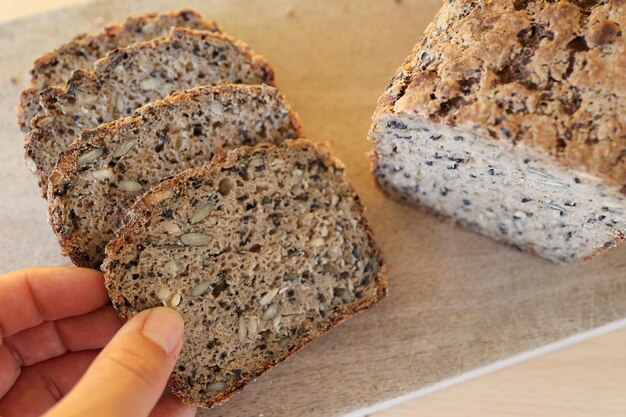Discover the Best Bread Choices for Diabetics
Navigating dietary choices as a diabetic can feel like a balancing act, especially when it comes to something as common as bread. With various types of bread on the market, identifying those that support a healthy blood sugar level is crucial. Let’s delve into which breads make the best choices for diabetics and why they matter.
Whole Grain and Whole Wheat Breads: The Gold Standard
Whole grain and whole wheat breads stand out as top picks for those managing diabetes. Unlike refined white bread, these options retain the entire grain kernel, which includes the bran, germ, and endosperm. This means more fiber, vitamins, and minerals - essential elements for slowing carbohydrate absorption and maintaining steady blood sugar levels.
- Whole Grain Bread: Offers a hearty texture and is minimally processed, providing more nutrition.
- Whole Wheat Bread: Often marketed alongside whole grain; ensure it’s 100% whole wheat for best results.
Multi-Grain Bread: Be Discerning
Multi-grain bread sounds like a healthy choice, but not all loaves are created equal. While they contain multiple types of grains, the term doesn't guarantee whole grain content. Check the ingredient list for whole grains as the primary ingredient to ensure you’re getting a nutritious option.
Sourdough: The Fermentation Factor
Rich in flavor, sourdough bread undergoes a fermentation process that might make it a viable option for diabetics. The fermentation potentially lowers the impact on blood sugar levels compared to other breads. However, the health benefits can vary based on how the bread is made, so it’s best to consume sourdough in moderation and keep an eye on portion sizes.
Considerations Beyond Bread
While choosing the right bread is a great start, consider pairing it with high-protein and high-fiber foods to further stabilize blood sugar. Options like avocados, eggs, or lean meats can transform a simple slice into a balanced meal.
Furthermore, understanding nutritional labels is key. Look for low-sugar content and at least 3 grams of fiber per serving.
Now, having explored healthier bread choices, how does one balance budgetary constraints with nutritional needs? This is where understanding options for financial assistance and resources can come into play.
😃 Government Aid and Financial Assistance Programs
Whether you’re managing increased grocery bills or seeking educational opportunities to better understand diabetic-friendly diets, support is available:
- Supplemental Nutrition Assistance Program (SNAP): Provides financial aid to help purchase healthy food options.
- WIC (Women, Infants, and Children): Offers nutrition assistance to eligible low-income families.
- Federal and State Health Grants: Programs exist to support health education, including diabetes management.
💳 Debt Relief and Credit Card Solutions
For those facing medical expenses with limited funds:
- Debt Consolidation Services: Simplifies multiple payments and often lowers interest rates.
- Low-interest or Zero-interest Credit Cards: Manage expenses without accruing high interest.
🎓 Educational Grants and Opportunities
Expanding your understanding of diabetes can empower better choices:
- University Health Programs: Many colleges offer free workshops or courses on nutrition and diabetes.
- Online Courses and Resources: Platforms like Coursera or Khan Academy offer courses on health and wellness.
Selecting the right bread is just the start. With the right choices in nutrition and financial tools, managing diabetes becomes a holistic journey of health and empowerment.
